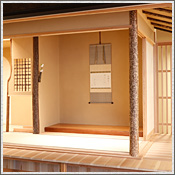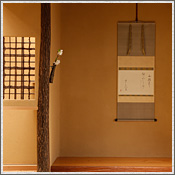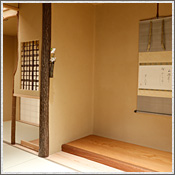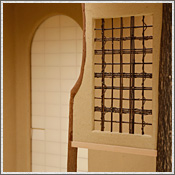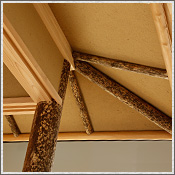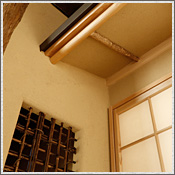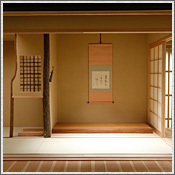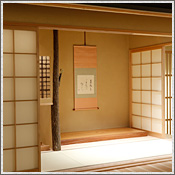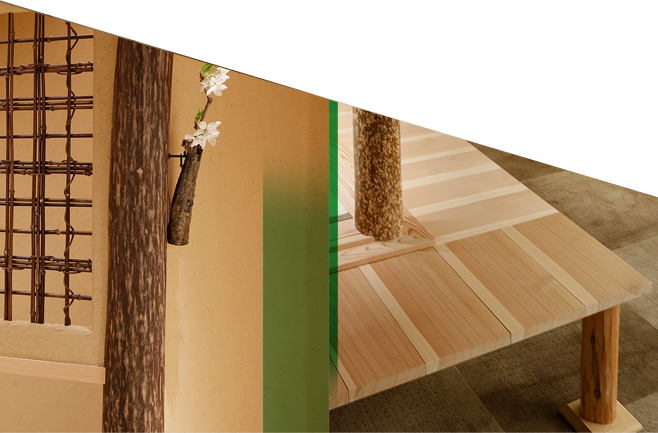
The tea room with nure-en (a comfortable wooden veranda on the side of aroom with a garden view) is inspired by the Seirentei tearoom at Toji-in Temple in Kyoto, established by ShogunYoshimasa Ashikaga in commemoration of the 100thanniversary of Takauji Ashikaga's death.People can relax and enjoy drinkingtea and viewing art while sittingon the veranda.
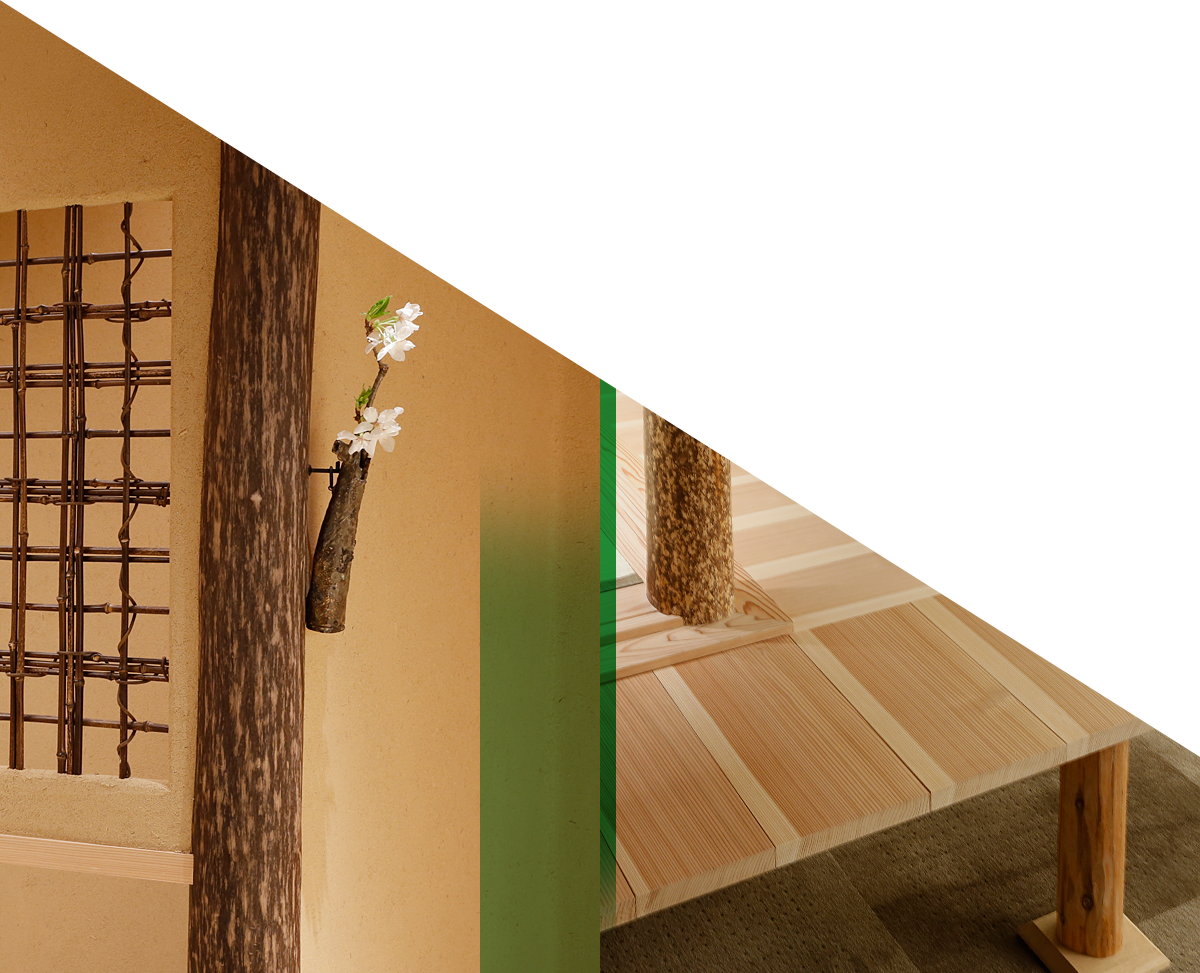

Varieties of Wood and Craftsmanship
The alcove post is a persimmon tree from Tamba in Kyoto. The small post placed in the corner of the tea ceremony room is the rare and beautiful Pseudocydonia tree. The alcove sideboard uses the red part of a Japanese black pine hand cut by machete.
The magnificent surface suits the taste of people familiar with tea ceremony. The exterior pillar is an old log used for over 30 years to dry rice stalks at an old farmhouse.
- "Kakejiku" a hanging scroll- Morihiro Hosokawa
-
"Yamajikite Naniyara-yukashi Sumire-kusa"
- Basho MatsuoThe scroll by Morihiro Hosokawa represents a haiku by Basho Matsuo. The poem depicts a mountain path with wild violets that signify the arrival of spring. Traditionally haiku poetry is always closely related to the season and nature. Every month, we ask Mr.Hosokawa to choose a poem and write a calligraphy.
- Morihiro Hosokawa
- Born in 1938. former writer of Asahi Newspaper, former Member of the Diet of Japan, former Governor of Kumamoto, former Member of Japan New Party, former Prime Minister of Japan. After his retirement from the political world, he started to create ceramics, write calligraphies, draw inkdrawings, paint with oil colors and make lacquerwares at his tea-house "Futou-an" in Yugawara, Kanagawa Prefecture.


Plenus Kayabacho Office 7th Floor Facility primarily consists of the Tea Room, a space for hospitality, Seasons of Tanada, a work that depicts the primeval Japanese landscape, and the Library, used for seminars and meetings.










